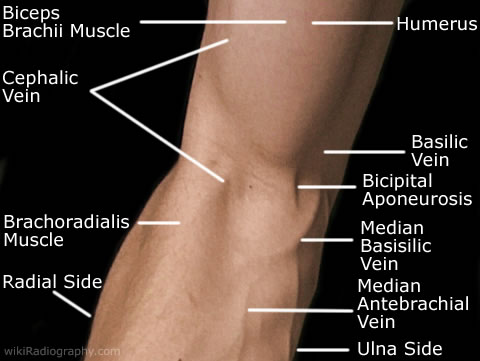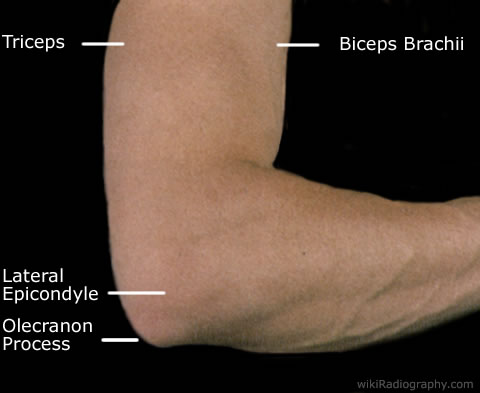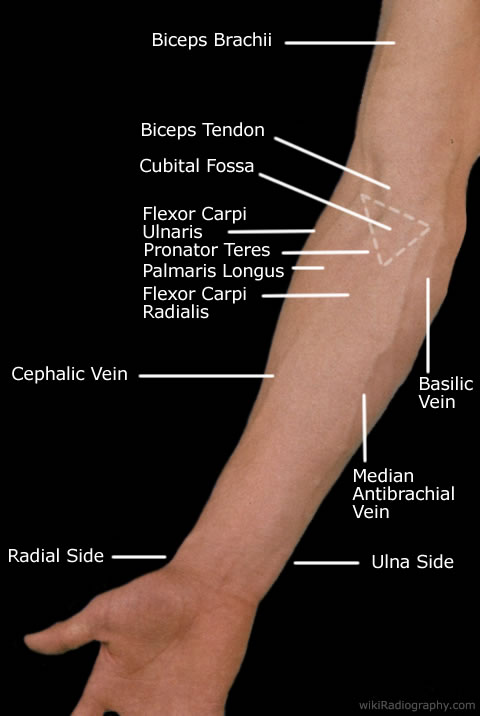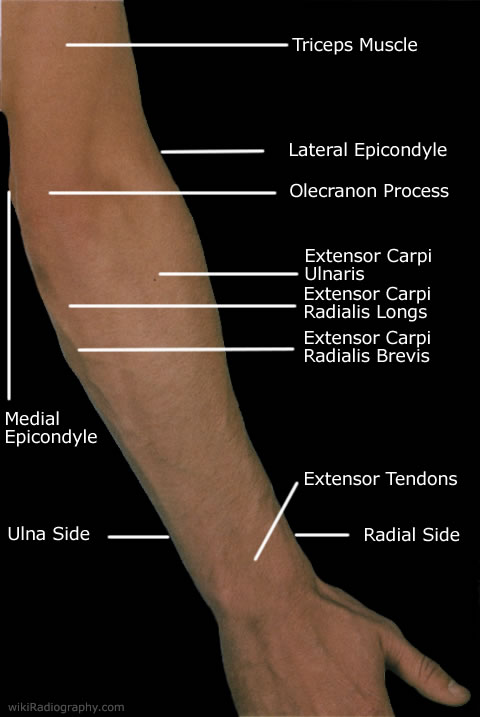Elbow/Forearm
Jump to navigation
Jump to search
Elbow Surface Anatomy | Other pages of interest |
Elbow Anterior surface:
| | Three bones form the elbow joint, the humerus of the upper arm, and the paired radius and ulna of the forearm. The elbow joint is a hinge joint and can perform flexion and extension. The complex action of turning the forearm over (pronation or supination) happens at the articulation between the radius and the ulna (this movement also occurs at the wrist joint). In the anatomical position with the forearm supinated the radius and ulna lie parallel to each other. During pronation, the ulna remains fixed, and the radius rolls around it at both the wrist and the elbow joints. In the pronated position, the radius and ulna appear crossed. |
Elbow Posterior Surface
| | On the humerous you are able to feel the medial and lateral epicondyles. The olecranon process is the large bony protuberance on the posterior of the elbow joint. This is referred to in laymans terms as the "funny bone". |
Forearm Anterior Surface:
Forearm Posterior Surface:
Go Back to Surface Anatomy Index



